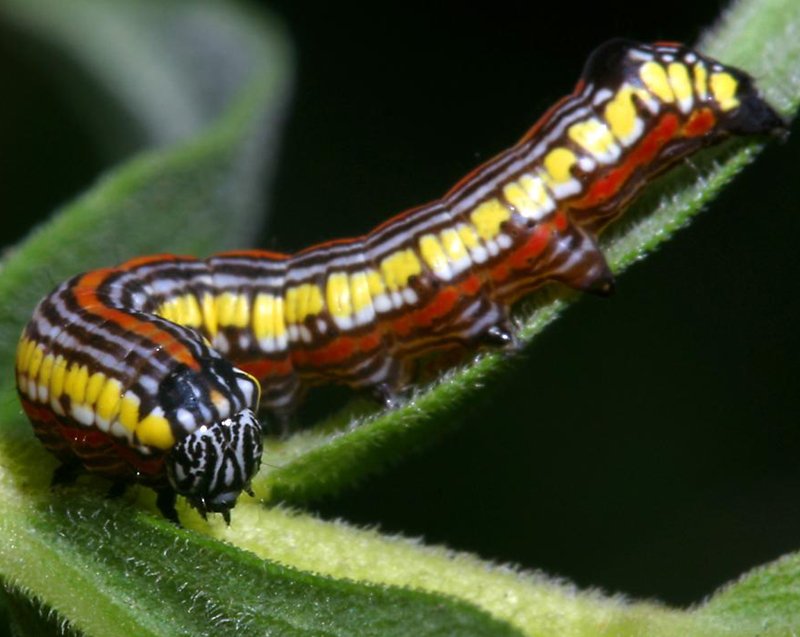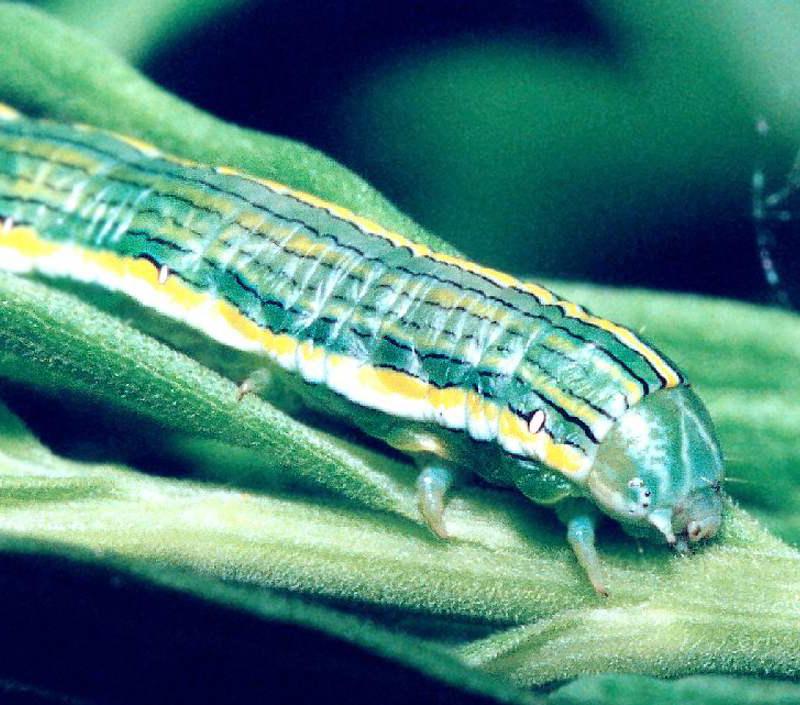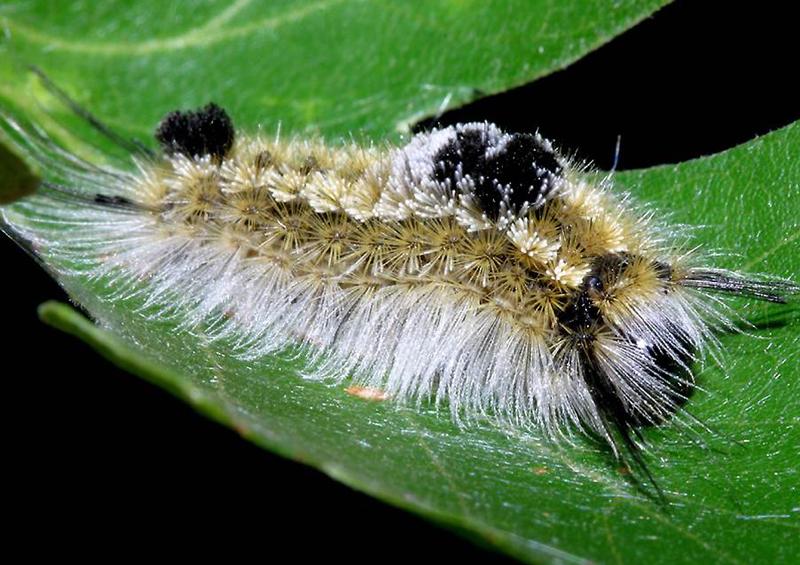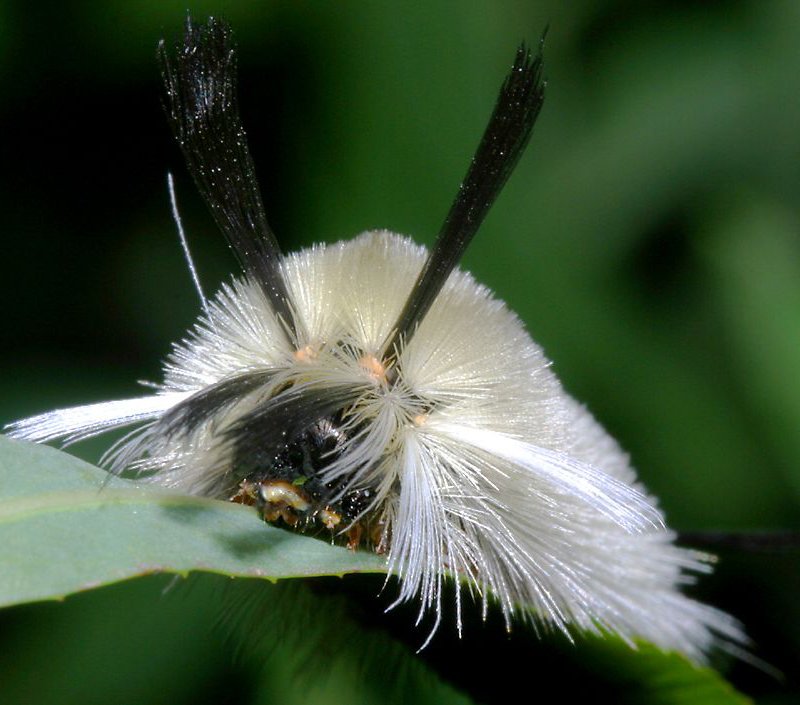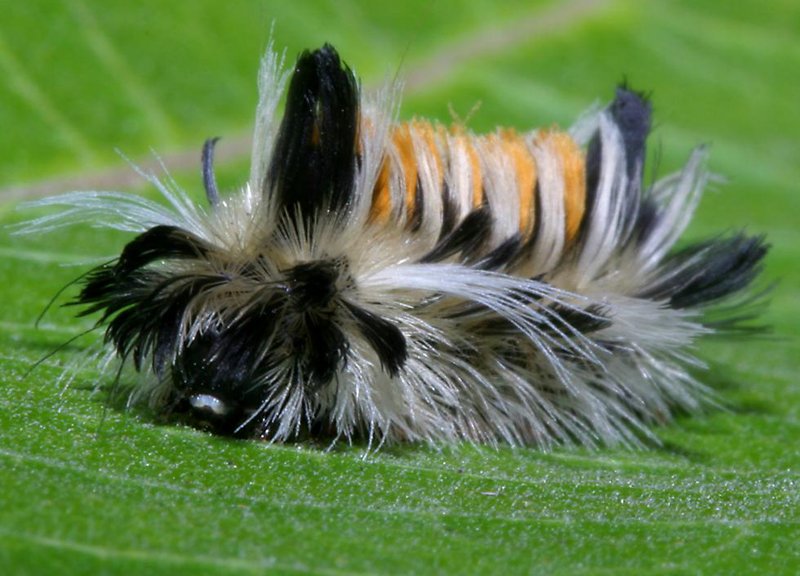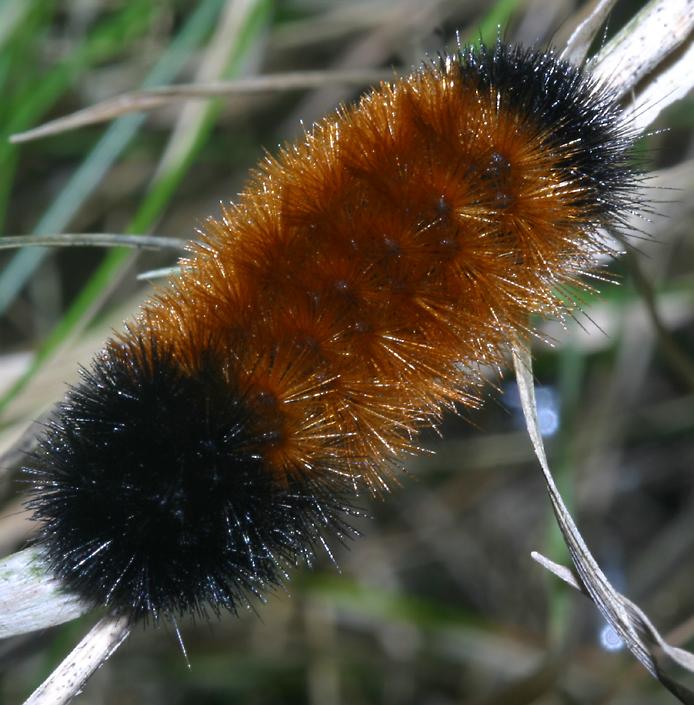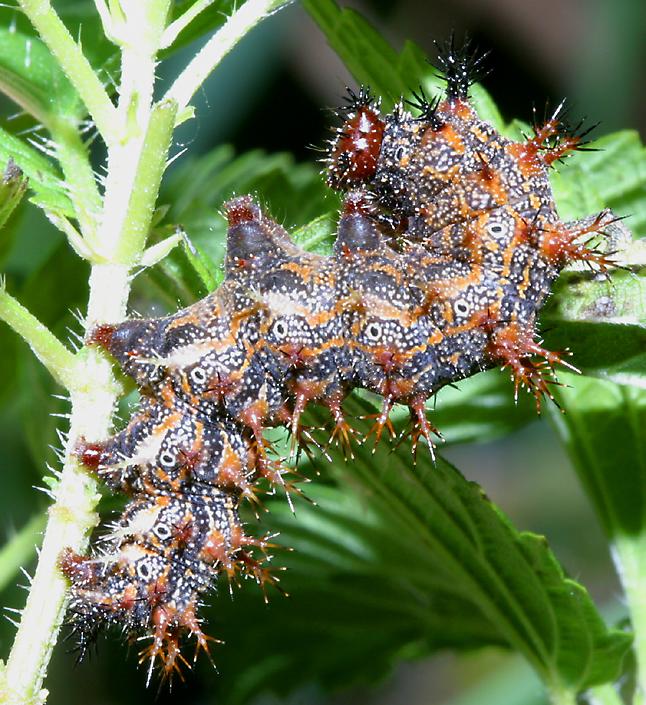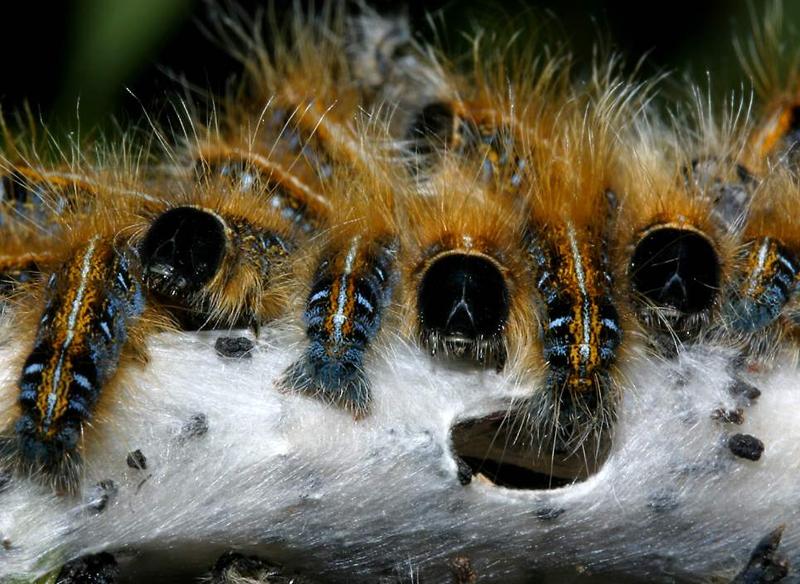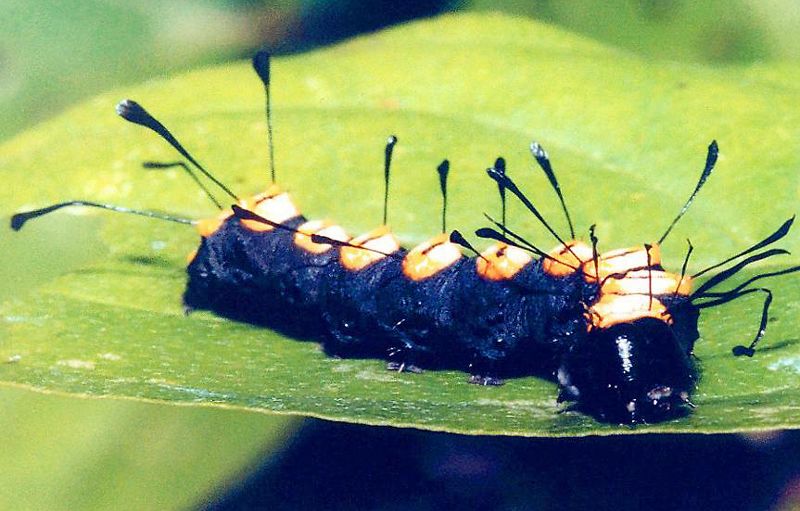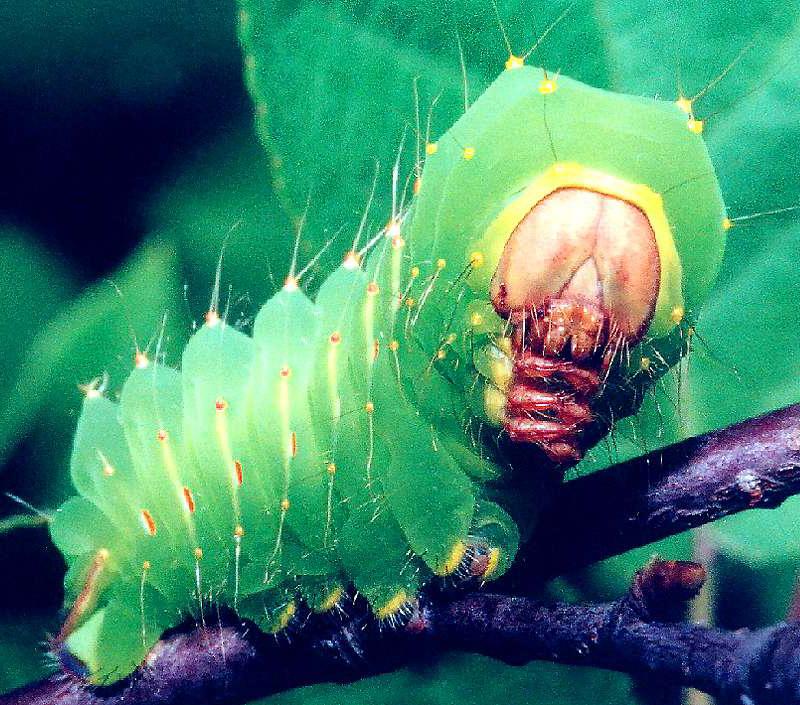Caterpillars of Northern Illinois
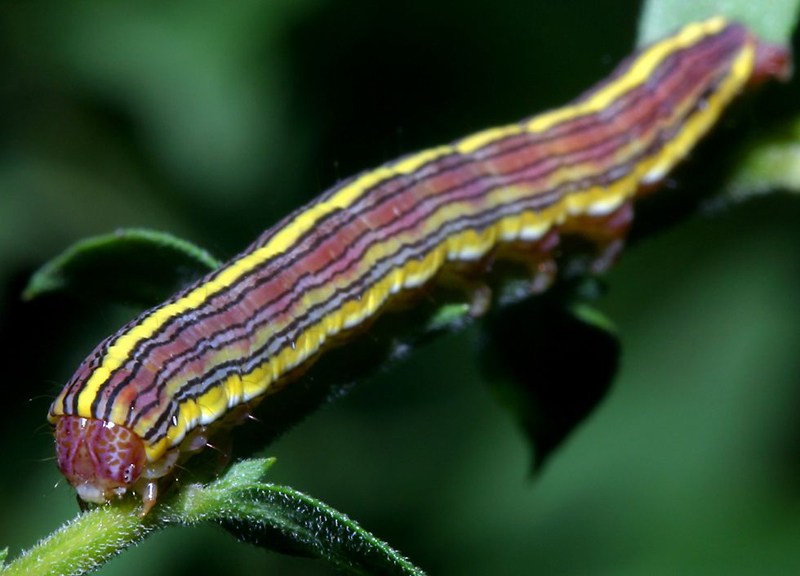
The Asteroid comes in a surprising number of different color variations. As well as the green model above, here's a purple one... |

...and here's a nice rich brown one. As you can see, all of them have yellow stripes on top and along the sides, all have white spiracles and all have some pattern of black pin-striping, but other than that anything goes! |
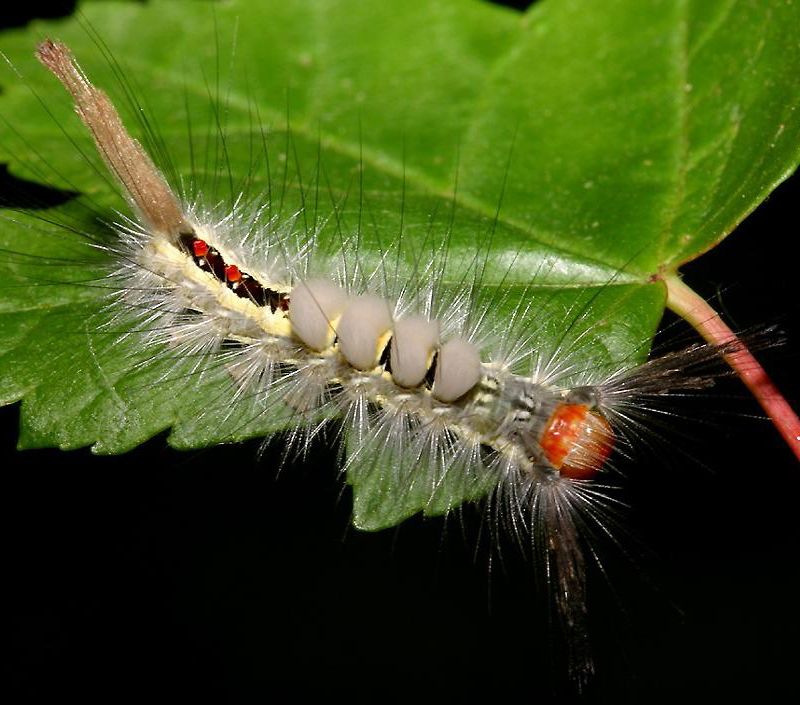
The white-marked tussock moth caterpillar is one of the best looking in the tussock moth family, the red head, yellow stripes, white tufts and prominent tail all add to its appearance, and the two bright red glands on its back are striking too, like little red lights. It's supposed to be a very common caterpillar, though somehow I only saw it once; the female moth is flightless and since it doesn't have any wings it hardly looks like a moth at all. I photographed a similar looking caterpillar called the painted pine moth in Vietnam and it turns out they both belong to the same genus! |
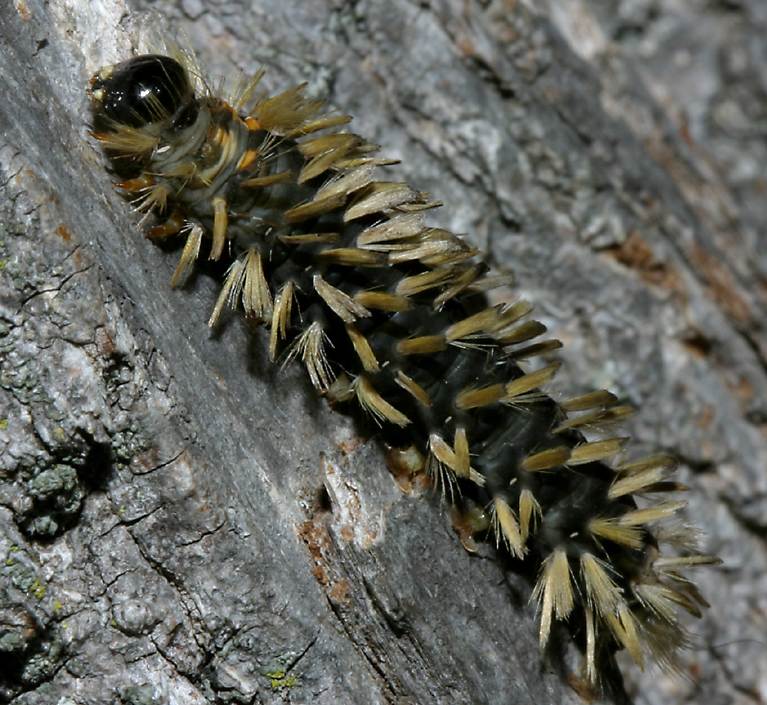
This wee beastie certainly has plenty of hair tussocks, but I wouldn't bet any money that it's a tussock moth. Actually I don't know what this is, but since I photographed it in southern Wisconsin I suspect that my inability to identify it is some sort of instant karma brought about by my attempt to sneak it across the state line onto a page of northern Illinois caterpillars. |
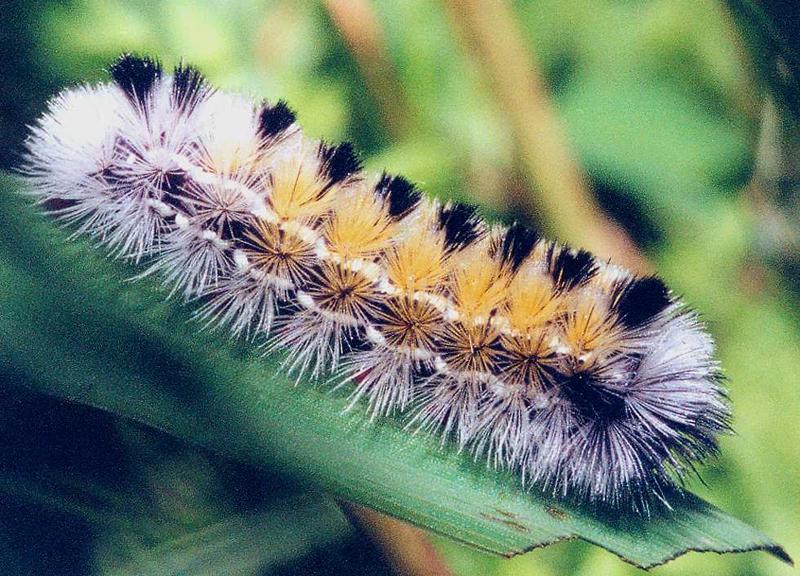
The Virginia ctenucha belongs to a family called tiger moths, which are related to the tussock moths and are quite common all around the world. It lives in grassland, in this case at Chain O' Lakes state park. The caterpillar has a simple elegance and the adult moth is quite attractive, too. |

The boldly colored and patterned larva of the monarch butterfly is perhaps the most famous caterpillar in the world. It's a popular subject for school projects, since its entire life-cycle completes very quickly, sometimes in less than 30 days. It's also good for this purpose because of its extraordinary feats of migration, flying for thousands of miles from North America to their winter roosts in Mexico. |
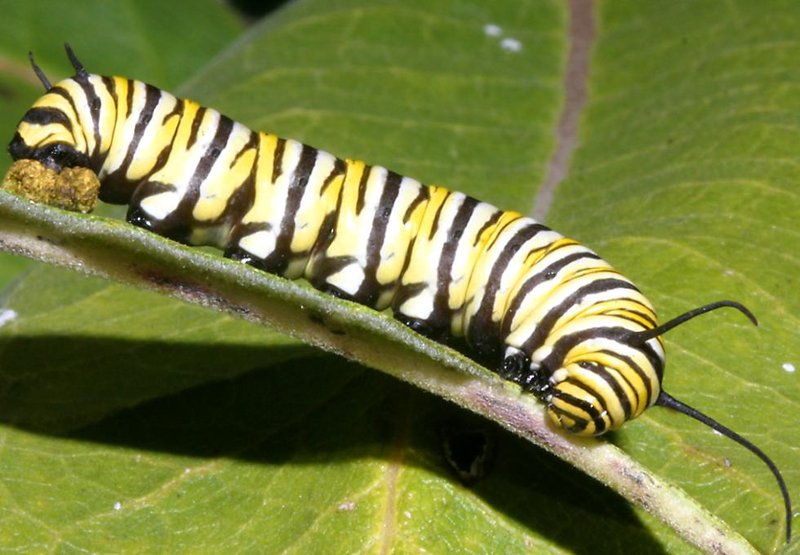
The monarch is colored like this as a warning that it's poisonous; it stores the heart toxins from its milkweed host within its body, and they're even carried forward into the chrysalis and the adult butterfly. This particular monarch caterpillar has something else pretty nasty, in the form of a pellet of poop between its hind claspers. Of course professional lepidopterists (people who study butterflies and moths for a living) would never call this poop, instead they'd use the proper term for it, which is "frass". See, you learned something new today, so now all you have to do is show off this wonderful bit of hard-won knowledge to your friends, family and acquaintances! |
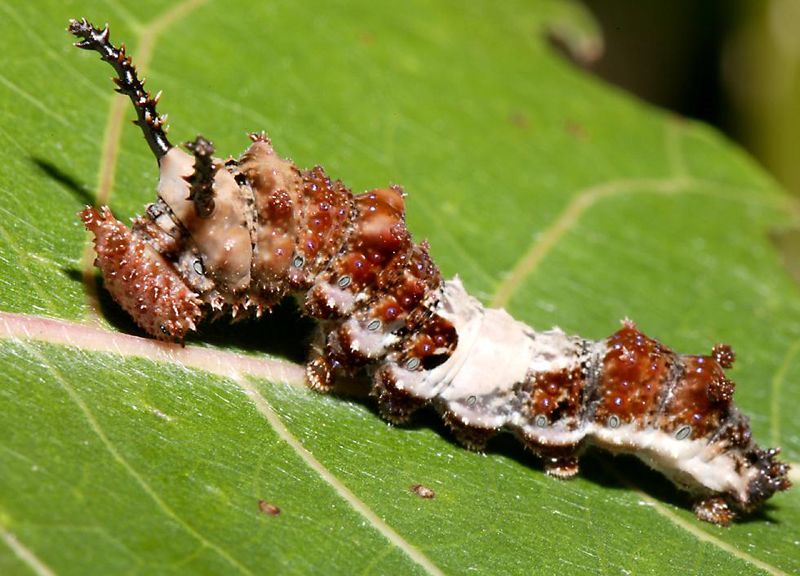
What does this viceroy caterpillar have in common with the monarch? Almost nothing, except that the adult viceroy is a very good mimic of the adult monarch. As you can see, though, the young don't look even faintly similar. The young viceroy is a bird-dropping mimic, a good ploy, since birds aren't big on eating their own droppings. I think that this must either be an unusual color phase or a fairly late instar, because other photos of this species have a sickly green color in place of the red, which gives them much more of the appearance of a bird-dropping. |
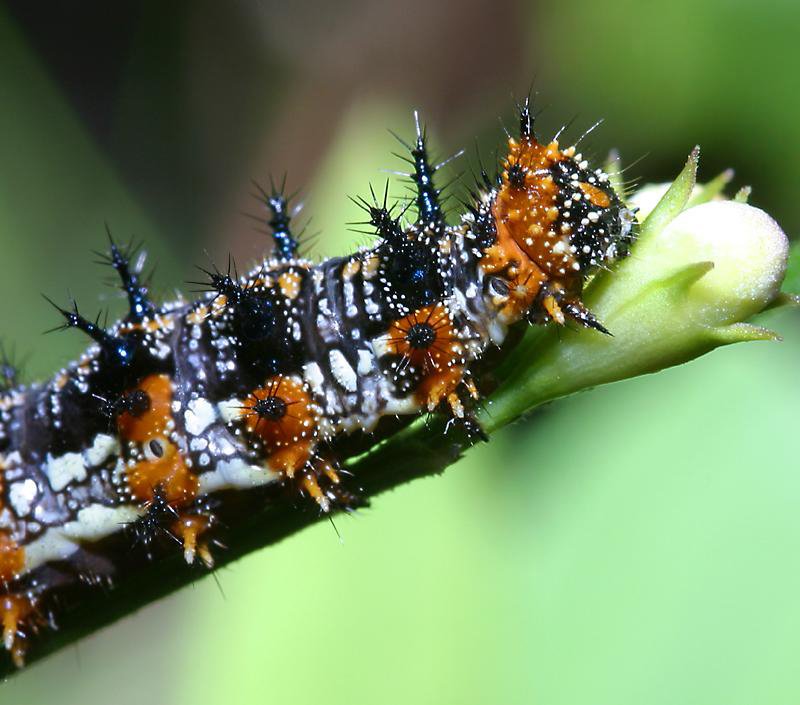
Here's the larva of one of America's most beautiful butterflies, the common buckeye. The caterpillar isn't bad either; if viewed with the light at the correct angle those spines along its back are dark metallic blue. Despite their vicious appearance, the spines aren't harmful to the touch, which is just as well because even its head is covered in them. |
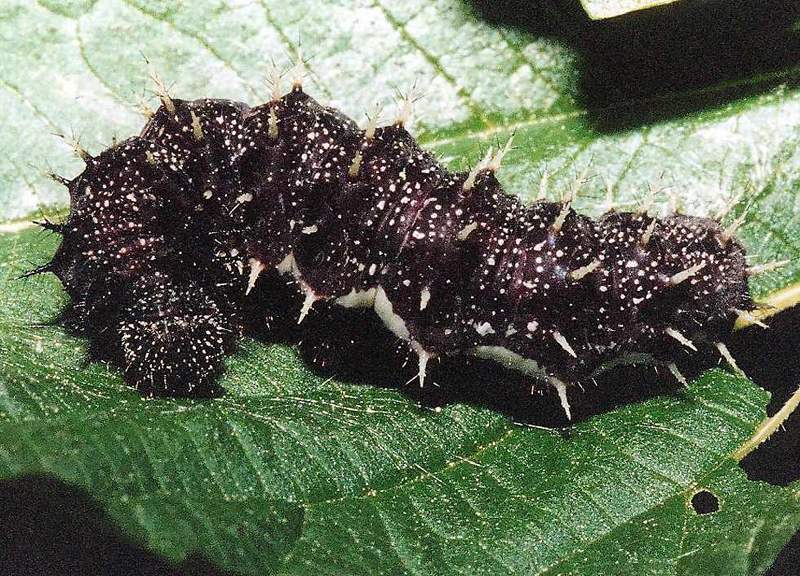
The larva of another of America's most common and attractive butterflies, the red admiral. I'm cheating a bit on this one, since it's another one I photographed in southern Wisconsin rather than northern Illinois, but you'll find plenty of them in both places. In this case, I noticed a curled up nettle leaf and when I unrolled it here was this spiky guy sheltering inside, with a head every bit as spiny as the buckeye. |
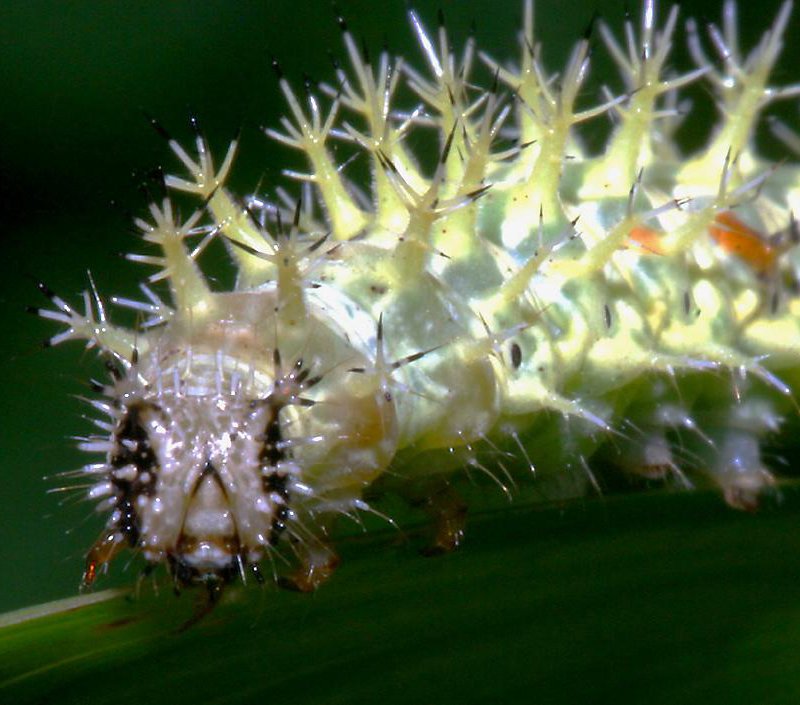
This eastern comma might not be pretty, but it has a good chance of winning the "spiniest caterpillar of northern Illinois" contest. It gets its name from the comma shape on the back of the hind wing of the adult butterfly. |
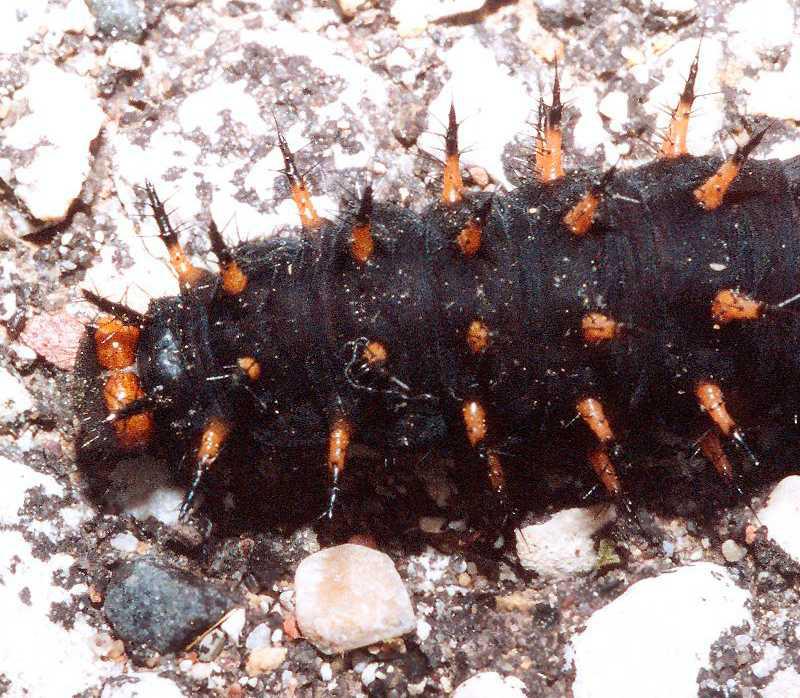
If "comma" and "question mark" are strange, then how about "great spangled fritillary"? This one was wandering around in the daytime across a road in Chain O' Lakes state park, which is highly unusual, since they're normally nocturnal and stay hidden. They have a very strange early life, in the fall the females lay around 2000 eggs each, which is an extraordinarily high number for a butterfly, the eggs hatch two to three weeks later, but the first instars don't eat anything for the next seven or eight months. When they do eat they won't touch anything except for violet plants. |
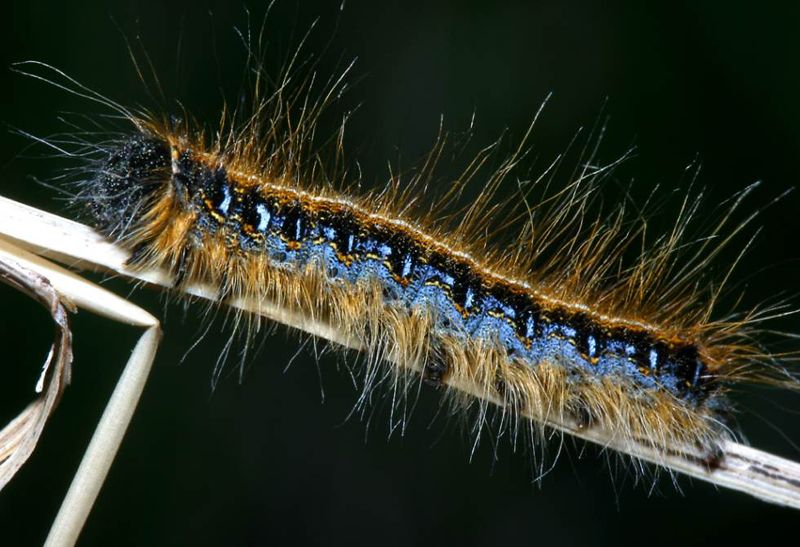
From a group of caterpillars which are ugly, spiky and harmless to one which is soft, very attractive and quite possibly the most feared and hated caterpillar species in America! But why would such a beautiful caterpillar be so loathed? |
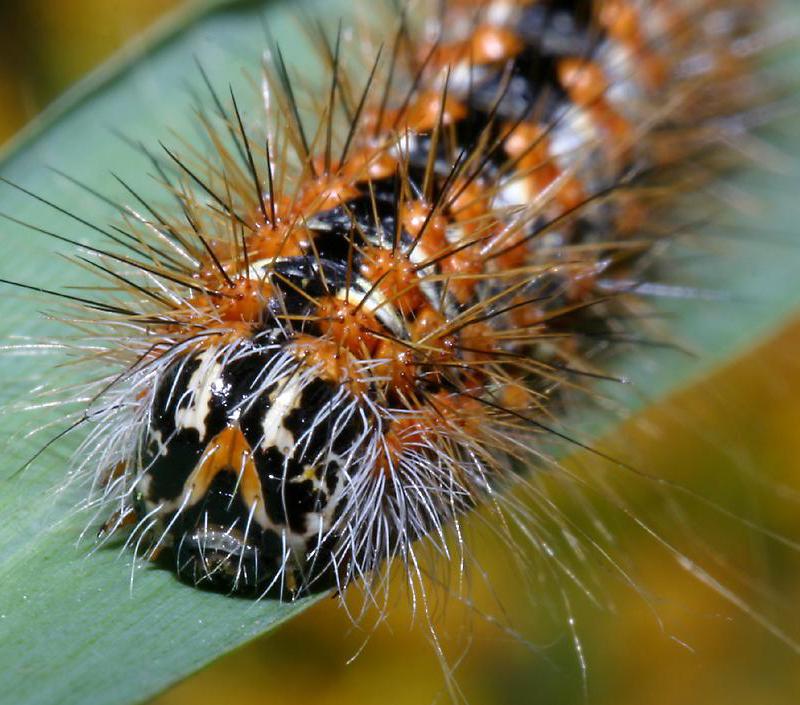
This is the larva of Henry's marsh moth, photographed at Volo Bog. This species folds a blade of grass over to create a triangular area within which it builds its cocoon. |
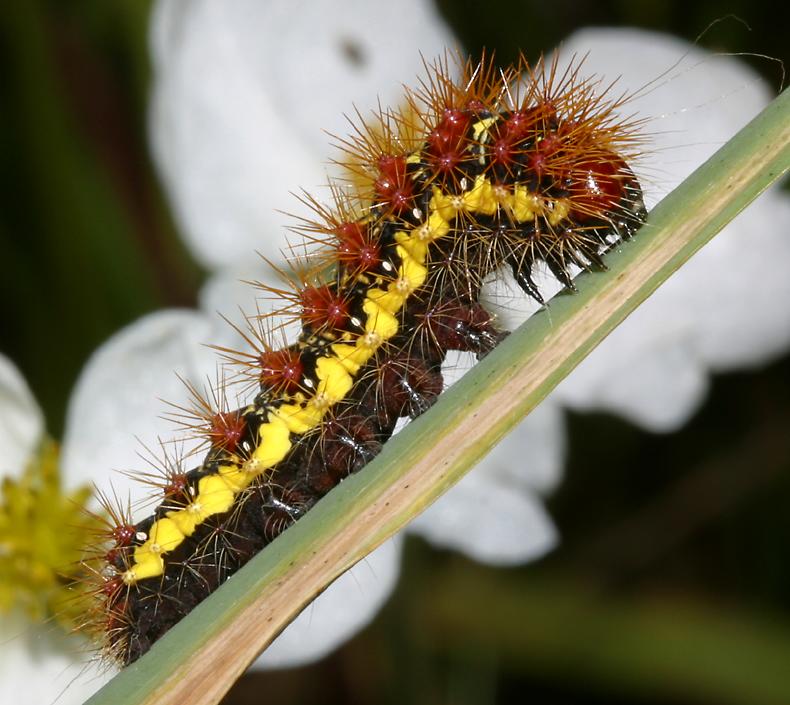
This beautiful smeared dagger moth caterpillar was hanging out on a reed beside the boardwalk that goes through Volo bog. This is another of those relatively few caterpillars in America which have a common name - the smartweed caterpillar. The name is only somewhat appropriate, since it eats many different types of plants and not just smartweed. |
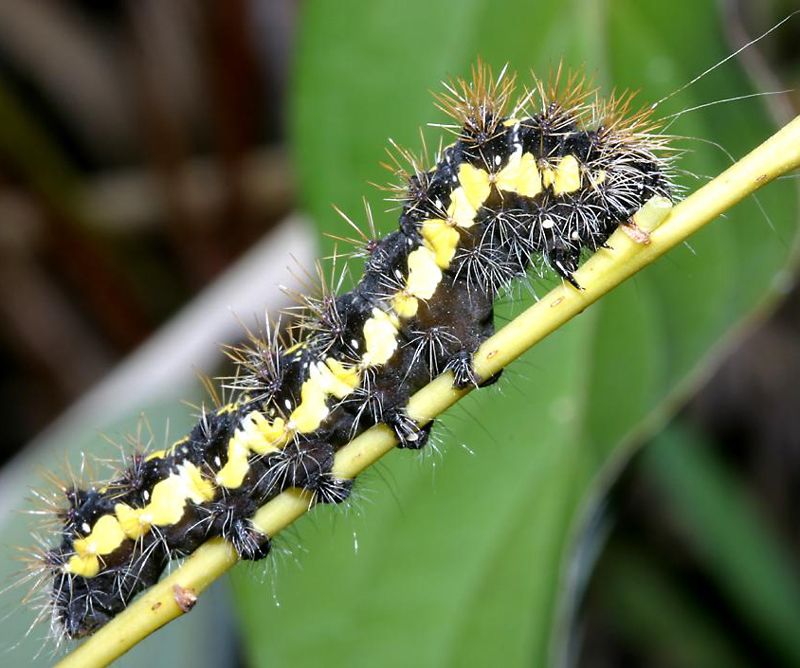
The smartweed caterpillar is highly variable in color, here's one without even a trace of red. In all cases they have an interrupted yellow stripe below white spiracles, and a few very long hairs sticking out from the head and the tail. |
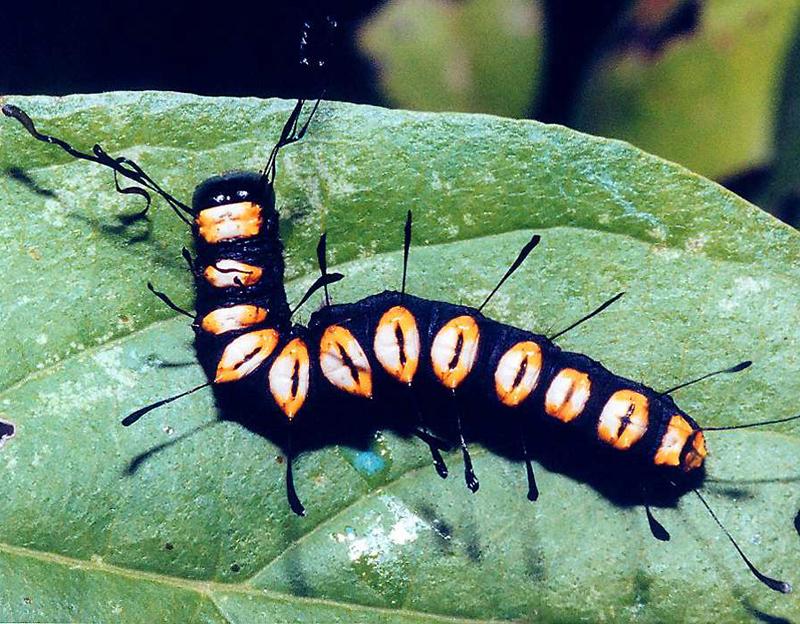
I didn't realize it when I took this photograph, but this is a very rare caterpillar. Apparently some American lepidopterists go their whole career without ever seeing one. |
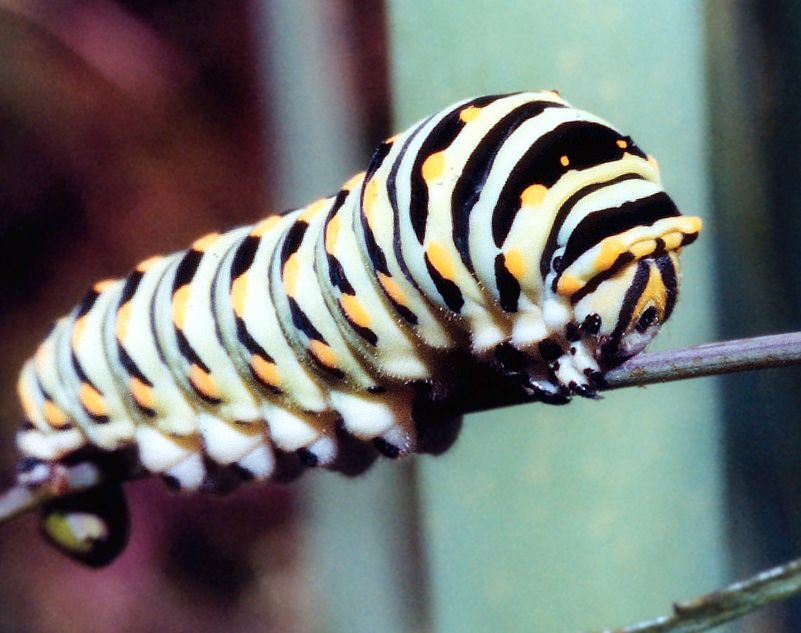
This is the young of the black swallowtail butterfly, which likes to eat members of the carrot family including celery, dill and parsley. Many swallowtail butterfly caterpillars have attractive colors and patterns, and most of them have a bad-smelling, orange-colored, y-shaped "osmetrium" just behind the head which is turned inside out when the caterpillar feels threatened. |

This certainly looks like another swallowtail caterpillar, but I can't tell which one. Although the pattern is very similar to the black swallowtail, this one has small spines. |
